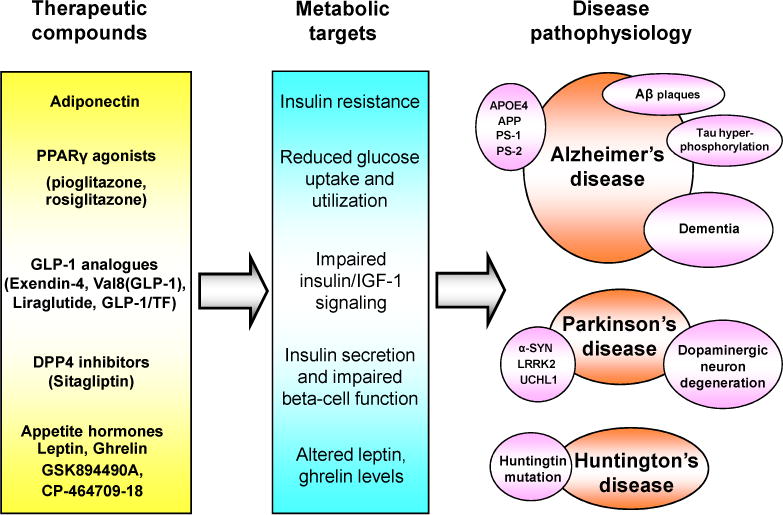Fig. 1.

An overview of some of the relationships between metabolic dysfunction, neurodegenerative disorders, and potential therapies. Metabolic dysfunction including impaired glucose metabolism, insulin resistance and abnormal appetite regulation are now known to be comorbid with AD and some other chronic neurodegenerative disorders, such as HD and PD. Treatments that target metabolic malfunctions may be effective for modifying neurodegenerative-disease pathology and symptoms. IGF-1 (insulin-like growth factor-1); PPARs (peroxisome proliferator-activated receptors); DPP-4 (dipeptidyl peptidase-4); APP (amyloid precursor protein); PS 1 (presenilin 1); PS 2 (presenilin 2); APOE (apolipoprotein E); α-SYN (α-synuclein); LRRK2 (leucine-rich repeat kinase 2); UCHL1 (ubiquitin carboxy-terminal hydrolase L1) [202, 203].
